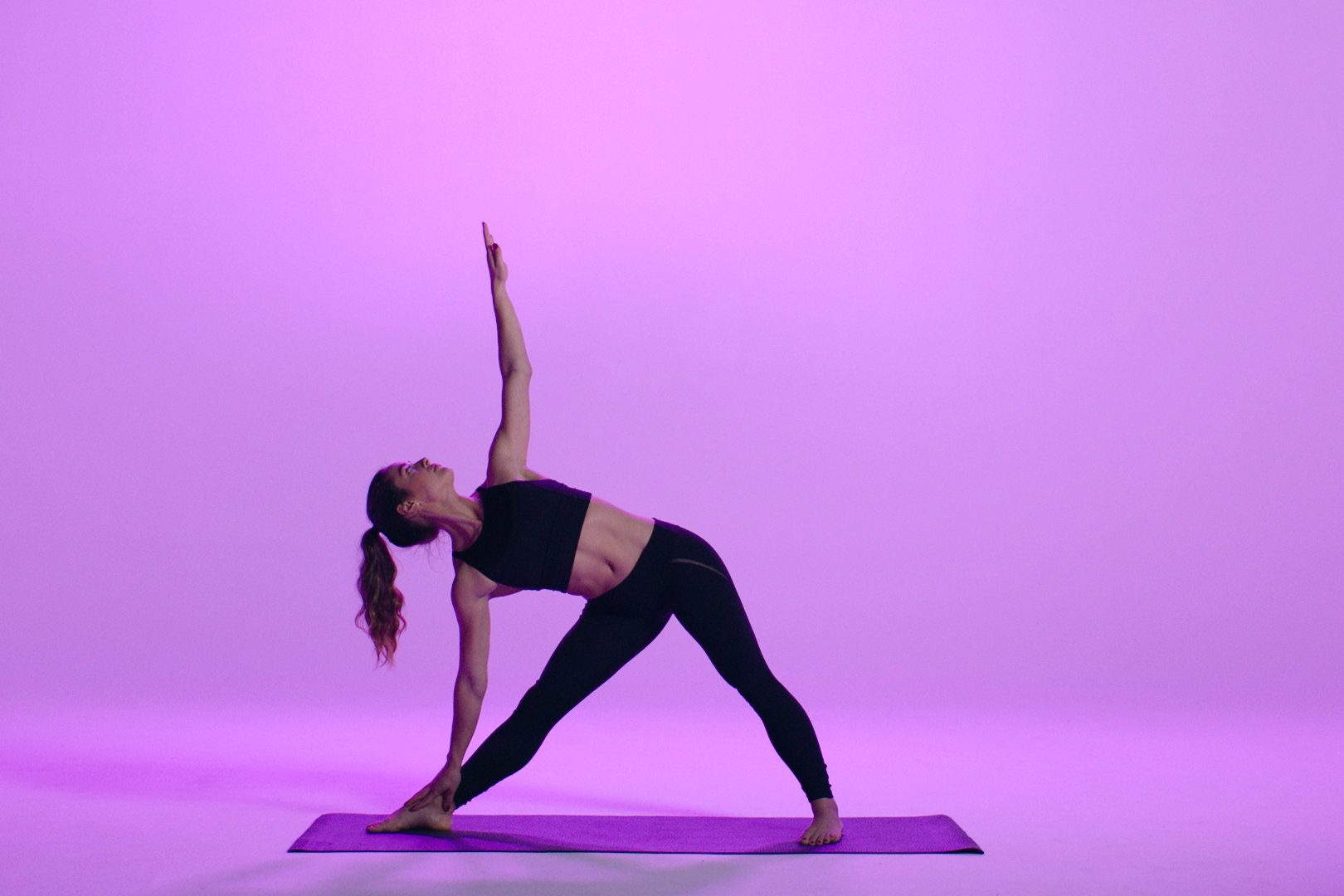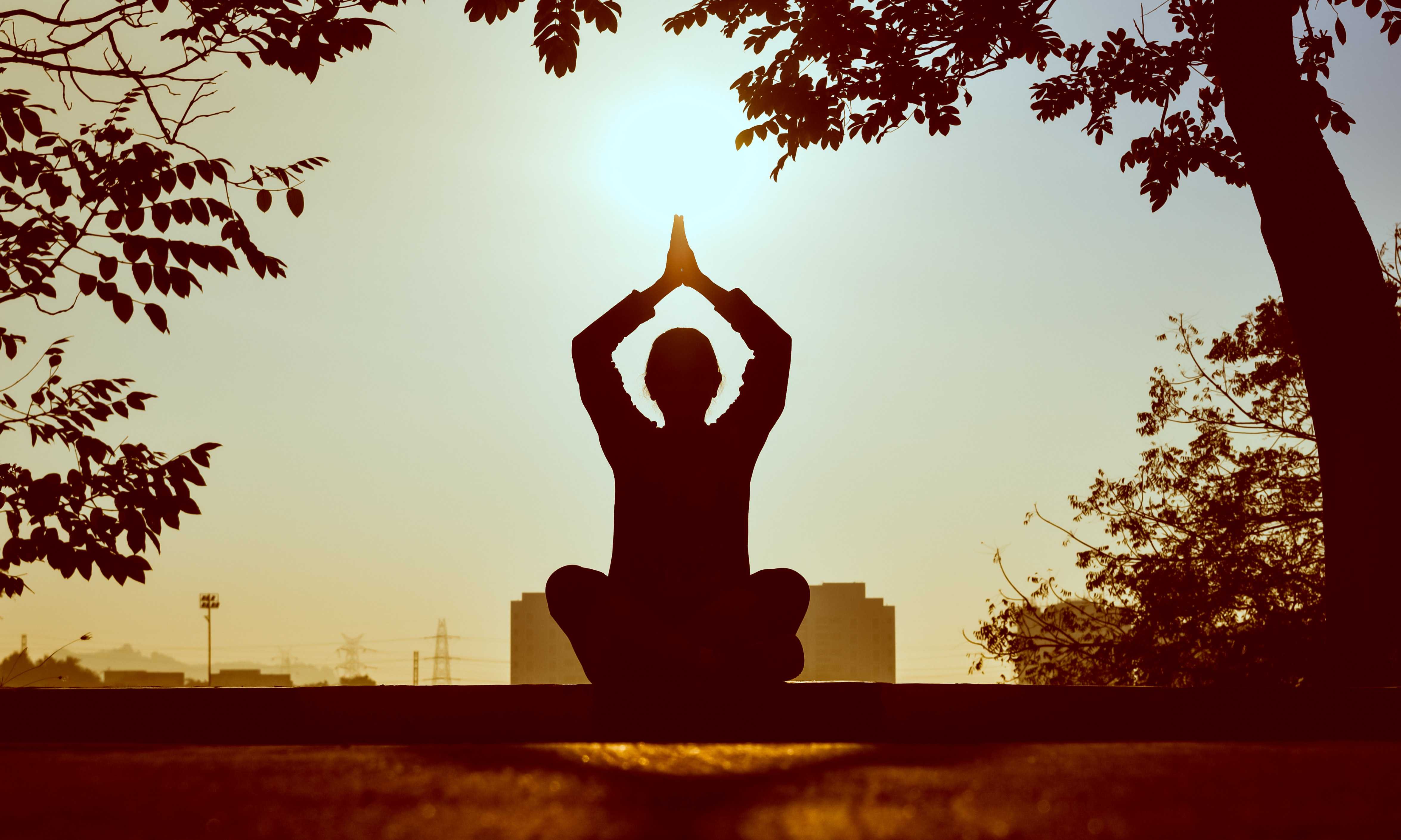Yoga Practice For Your Health
Health
The word “Yoga” has been derived from the Sanskrit term “Yuji” which means union or yoke. Yoga can be traced back to thousand years and has been practiced for the purpose of bringing the mind and body together.
The practice of Yoga includes breathing exercises, poses and meditation that are designed to help relaxation as well as reduce stress.
Yoga has been referred to provide many advantages helping physical and mental health, even though not all the mentioned benefits have been scientifically proven.
However, here are advantages that are offered by Yoga practicing.
Yoga helps to decrease stress as it has the ability to ease stress as well as enable relaxation. There are multiple scientific studies which have been conducted and have proved that Yoga can decrease cortisol secretion, which is the primary hormone that is connected to stress.
One of the study has shown the strong effect of Yoga when it comes to stress where 24 women who had perceived themselves as being emotionally stressed were analyzed. After undergoing a three month yoga-program, it was found that their level of cortisol had dramatically dropped. Besides, their level of stress, anxiety, depression and fatigue had also dropped.
There is also another study which involved 131 people where the results were quite the same, showing that after enrolling into Yoga classes for 10 weeks, their stress and anxiety was reduced. Besides their mental and physical health was improved.
When Yoga is practiced alone or in combination with other methods that help in alleviating stress, Yoga has proved to be an effective way of maintaining stress in balance. The ancient people of India knew this and took advantage of it as they practiced Yoga and made it part and parcel of their tradition.
Yoga helps in relieving anxiety and many people initially join Yoga classes with a purpose of coping with feelings of anxiety. Surprisingly enough, there are several numbers of research that have proved that yoga can help to relieve anxiety.
There is a study that involved 34 women who had been diagnosed to suffer from anxiety disorder. These women were enrolled in yoga classes where they participated twice a week and did that for two months. The results of the study showed that those women after practicing yoga ended up having a significant drop in their level of anxiety than those who did not.
There is also another study that followed and this involved 64 women who were suffering from post-traumatic stress disorder, this is normally characterized by extreme anxiety and fear due to being exposed to a traumatizing event.
After just ten weeks, the women who had practiced yoga once in every week ended up having fewer symptoms of PTSD. To be specific about 52% of the participants were no longer having criteria of being categorized as suffering from PTSD.
There is no a clear explanation on how yoga works to reduce anxiety symptoms. But yoga emphasizes the importance of focusing on what you are doing at the moment and finding a feeling of peace which is so essential in treating anxiety problems.

Yoga may help in reducing inflammation, and this has been proved by several studies which have been conducted on several people. Inflammation is a way of our body immunity to respond to injury, but when there is extreme and chronic inflammation can lead to the development of pro-inflammatory diseases which include heart disease, cancer as well as diabetes.
A study which was conducted back in 2015 that involved 218 participants who were equally grouped, the group involved those who were practicing yoga on their daily basis and the other group involved those who weren’t. Both group were then asked to perform moderate and physical stressing exercises so as to induce stress.
When the study was done the individuals who were involved in practicing Yoga seemed to have lower inflammatory signs as compared to those who did not.
A same study was conducted back in 2014 and showed that after 12 weeks of Yoga practice, Yoga reduced inflammatory signs in women who were breast cancer survivors and who had persistent fatigue.
Despite the fact a lot of research is still needed in order to confirm the benefits that are offered by yoga regarding the inflammation, but these findings show that yoga might help in protecting against some sort of diseases that lead to chronic inflammation.
Besides, yoga has been proved to improve heart health, as it has proved to help in improving blood circulation throughout the body as well as supplying tissues with essential nutrients, as your heart’s health is an important organ when it comes to your overall body health.
There are studies which have proven that yoga helps in improving the health of the heart and reducing several risks that might lead your heart to suffer from different heart diseases.
One of the study showed that participants who were over 40 years old and enrolled in yoga practice for five years experienced a lower blood pressure as well as pulse rate as compared to those who did not.
Most of the heart attack problems are caused by blood pressure, which include heart attacks as well as stroke. Lowering the blood pressure plays a big role in reducing the risk of having such problems.
Some of the research that were conducted have come up with the results that including yoga in a healthy lifestyle can help decrease the progress of heart attack.
There is a study that involved 113 patients who were suffering from heart disease, and the study aimed at studying the effects of lifestyle change which included a single year yoga training which went along with dietary modification as well as stress management.
The results showed that the participants had a 23% drop in total cholesterol as well as a 26% reduction in LDL cholesterol. Besides, the disease progression stopped in 47% of the entire patients.
There is still more research that has to be done to identify the role yoga versus other factors such as diet. But what is known so far is that it plays a big role in minimizing stress, which is one of the main contributors to heart disease.

Many people are getting into yoga and is turning into an adjunct therapy improving the quality of life for many people. In one of the studies, 135 elderly people were enrolled to six months of either yoga, walking or a control group. Practicing yoga enhanced their quality of life and mood together with fatigue as compared to those who practiced walking and other exercises.
Other studies looked upon how yoga would enhance the life quality as well as reduce cancer symptoms in patients.
A study focused on women who were suffering from breast cancer that were undergoing chemotherapy. The women were enrolled in yoga classes and the results showed that the symptoms of chemotherapy effects were decreased. These include nausea as well as vomiting. Besides, it improved their life quality.
Another similar study focused on how eight weeks of yoga practice had affected women who were suffering from breast cancer. The end result of the study showed that women experienced less pain as well as fatigue while there was an improvement in levels of invigoration, relaxation as well as acceptance.
Other several studies came to the conclusion that yoga enhanced the quality of sleeping, spiritual well-being, social function as well as reducing symptoms which were associated with depression and anxiety in patients suffering from cancer.
There are a number of studies, which show that yoga practice may offer anti-depressant effect and can help in decreasing symptoms, which are associated with depression.
This means that yoga is able to lower the levels of cortisol, which is a stress hormone that affects the levels of serotonin, the neurotransmitter that is often linked with depression.
In one of the studies, participants within an alcohol dependence program were enrolled in a special yoga program practicing a yoga type known as Sudarshan Kriya. This type of yoga focuses on rhythmic breathing.
Within two week, the results showed that the participants had fewer symptoms symptom of depression while having lower level of cortisol. Besides their levels of ACTH which is a hormone linked for stimulating cortisol release had dropped.
More studies which were identical came up with the same results, and showed a link between practicing yoga with a decrease in depression symptoms.
Based upon the results, it is clear that yoga can help in reducing depression, when practiced alone or simultaneously with other traditional methods in a treatment.
Many people are experiencing chronic pain and this is affecting many people in millions. Besides, it has a range of possible causes starting from injuries to arthritis.
There are different are different researches that have shown that yoga practicing might help in reducing different types of chronic pain.
During a certain study, 42 individuals that had carpal tunnel syndrome were either put to wrist splint or practiced yoga for eight weeks. At the end of the eighth week, those who practiced yoga were found to be more effective to reducing pain as well as improving grip strength as compared to those who were had wrist splint.
Back in 2005, another study had shown that practicing yoga might help in decreasing pain as well as improving physical body functioning of the participants who were experiencing osteoarthritis of the knees.
Although more research is needed to prove how yoga performs such miracles, but it is with no doubt that practicing, yoga on a daily basis is beneficial for those patients who are experiencing chronic pain.
Yoga as been proven to promote the quality of sleep. Poor sleep quality has been linked to obesity, depression and high blood pressure among many issues. But studies have shown that practicing yoga at least twice in a week could enhance your quality of sleep.
Back in 2005, 69 senior patients were enrolled to either practice yoga or take an herbal preparation while others were enrolled in a control group.
The group which involved patients that were practicing yoga fell asleep very fast, slept for many hours and felt more well rested in the morning than those who were enrolled in other groups.
There is another study that focused at the effects of yoga upon the sleep with patients who are affected with lymphoma. The study’s results showed that yoga decreased sleep disturbances, enhanced sleep quality as well as duration while reducing the using sleeping pills or other medications.
As we mentioned before, it is still not clear how yoga works to enhance the secretion of melatonin a hormone that is responsible for regulating wakefulness and sleep.
Besides, yoga plays a significant role in reducing depression, anxiety, chronic pain as well as stress which are all common contributors to sleeping issues.

Yoga helps in enhancing flexibility and balance. This has been proven by a considerable number of researches that were conducted to prove that yoga can enhance performance via the use of special poses that are essential in targeting balance and flexibility.
One of the latest study focused at the outcome of 10 weeks of yoga practice upon 26 male in a college athlete. Yoga practice improved several measures of balance and flexibility as compared to those who were in a controlled group.
Another similar study was conducted upon 66 senior people who were asked to either practice yoga or any type of body exercise.
After one year, those who practiced yoga, their total flexibility increased by nearly four times as compared to the other group which practiced other body exercises.
There is also a study that was conducted back in 2013, that found out that practicing yoga enhanced balance and mobility in seniors.
Making a practice in yoga for 15 to 30 minutes on a daily basis might make a huge difference for people who are looking a way to improve their performance in balance and flexibility.
Yoga can help in improving your breathing. Yogic breathing or Pranayama is a yoga practice that focuses on controlling how you breathe via breathing practices as well as techniques.
Almost every type of yoga includes these breathing exercises. Besides, several studies have shown that practicing yoga might enhance your breathing.
In one of the many studies involved 287 college students who enrolled in a 15 week class that taught them different yoga poses as well as breathing exercises. At the end of the research, the results showed a significant improvement in vital capacity.
Vital capacity is referred to as a measure of the maximum amount of air that can be exhaled from the lungs. This is very essential to those patients suffering from lung disease, asthma, as well as heart issues.
There is another study which was conducted back in 2009 which found that practicing yogic breathing enhanced symptoms as well as lung function within patients that were suffering from mild-to-moderate asthma.
Enhancing breathing can help in building endurance, keep the lungs and hear health as well as optimize performance.
Yoga is known to relieve migraines which are severe recurring headaches that are known to affect 1 in every 7 Americans annually.
Normally, patients who are suffering from migraines are treated using medications to relieve and maintain the symptoms.
But, a lot of evidence has shown that yoga can be an important adjunct therapy so as to help in reducing migraine frequency.
Back in 2007 there was a study that grouped 72 patients who were suffering from migraines into either a yoga therapy or into a self-care group for a period of three months. Those who were in a yoga practicing group, experienced a reduction in headache intensity, pain and frequency as compared to those who were enrolled in the other group.
Another similar study that involved divided 60 patients suffering from migraines who were treated using either conventional care methods in combination with yoga while the other group were just treated with conventional methods without yoga.
Researchers believe that practicing yoga might help in stimulating the vagus nerve, which has proved to be so effective in relieving migraines.
Yoga has been proved to enhance healthy eating habits, which is sometimes referred to as mindful eating. This is a concept that requires someone to focus on the food they are eating at the moment.
This is all about paying attention to the food taste, texture and smell and taking into consideration any feelings, thoughts or sensations you are experiencing while you eating.
This practice has proved to enhance healthy eating habits that are responsible in controlling blood sugar, treat disordered eating behaviors, and increase loss of weight.
Due to the fact that yoga enacts the same emphasis on mindfulness, some of the studies have shown that yoga can be used to enhance healthy eating habits.
One of the studies that incorporated yoga within an outpatient eating problem treatment program upon 54 patients, the results showed that yoga enhanced in reducing both eating disorder symptoms as well as preoccupation when it comes to food.
There is another small study that focused on how yoga had affected symptoms of binge eating issue that is characterized by compulsive extreme reacting as well as a feeling of control loss.
Besides, yoga was found to lead to a decrease in binge eating episodes as well as an increase in physical activity as well a minor increase in weight.
For those who have and do not have disordered eating behaviors, who are practicing mindfulness via yoga can help in the development of healthy eating behaviors.

Mwijage Prince